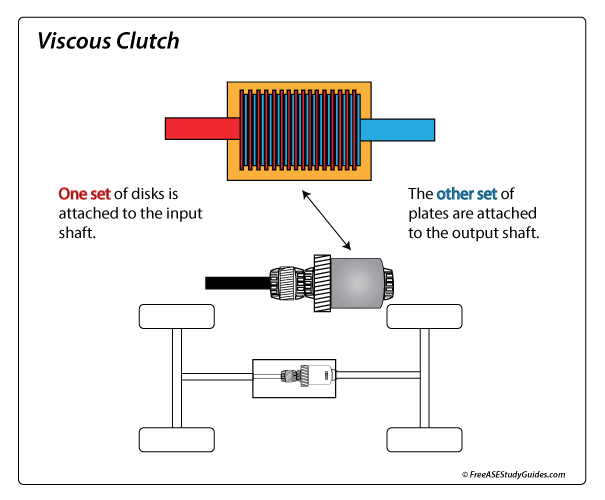All Wheel Drive Viscous Clutch
(AWD) All-wheel drive vehicles are controlled by an electronic control module, vacuum, or viscous fluid. They use viscous couplings to provide additional stability. Viscous couplings have a thick fluid contained between a series of plates. One set of plates is attached to one axle, and the other set is attached to the other axle.

When the AWD vehicle operates under normal conditions, the plates and the thick fluid converge at the same speed. When the two axles are spinning at different speeds, such as when a tire breaks loose and begins to spin, the unit transfers more torque to the slower axle. The faster disks are dragging the thick fluid that drags the other disks. This action transfers torque to the other axle.
Most viscous couplings can be tested with a bench vise. Place the unit in the soft jaw vise, careful not to damage the case. Install the driveshaft on the companion flange. Use a foot-pound torque wrench to apply torque to the other end. Measure the turning torque required to spin the axle. These torque measurements are typically around 25-35 foot-pounds. Check with the vehicle manufacturer's specifications before proceeding.
The viscous fluid is added by weight, so when a unit is found faulty, it is typically replaced with a new one. The fluid becomes thicker when heated to provide more gripping power between the disks when needed most.